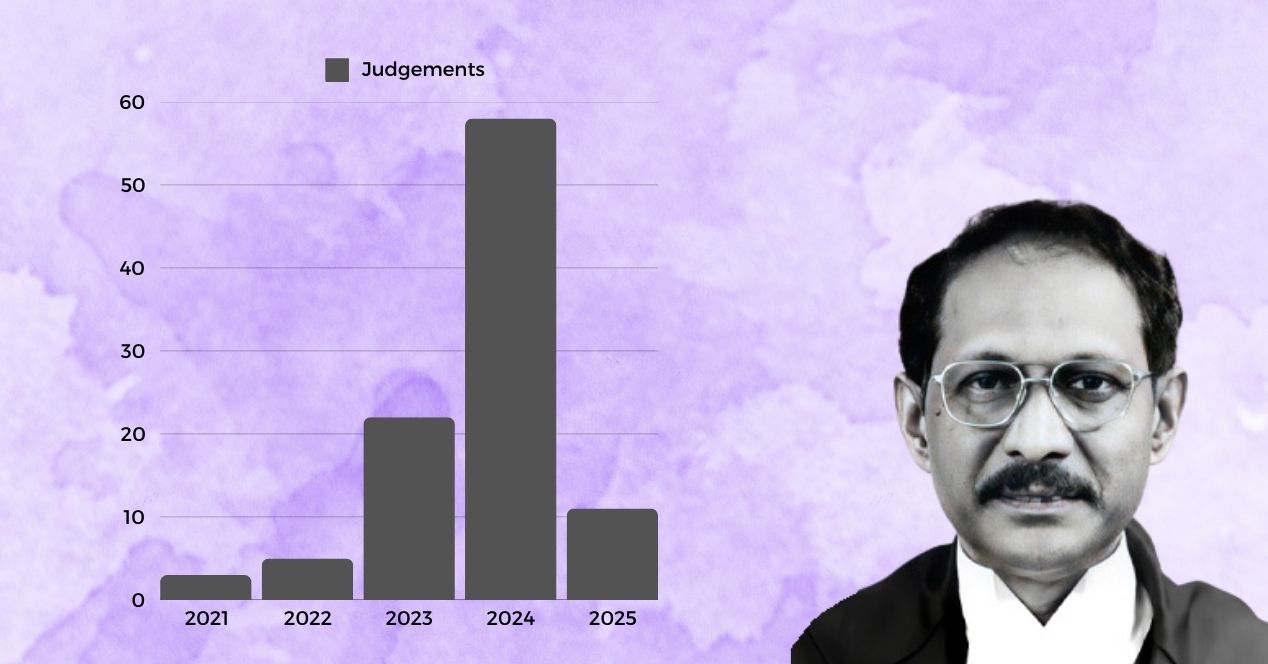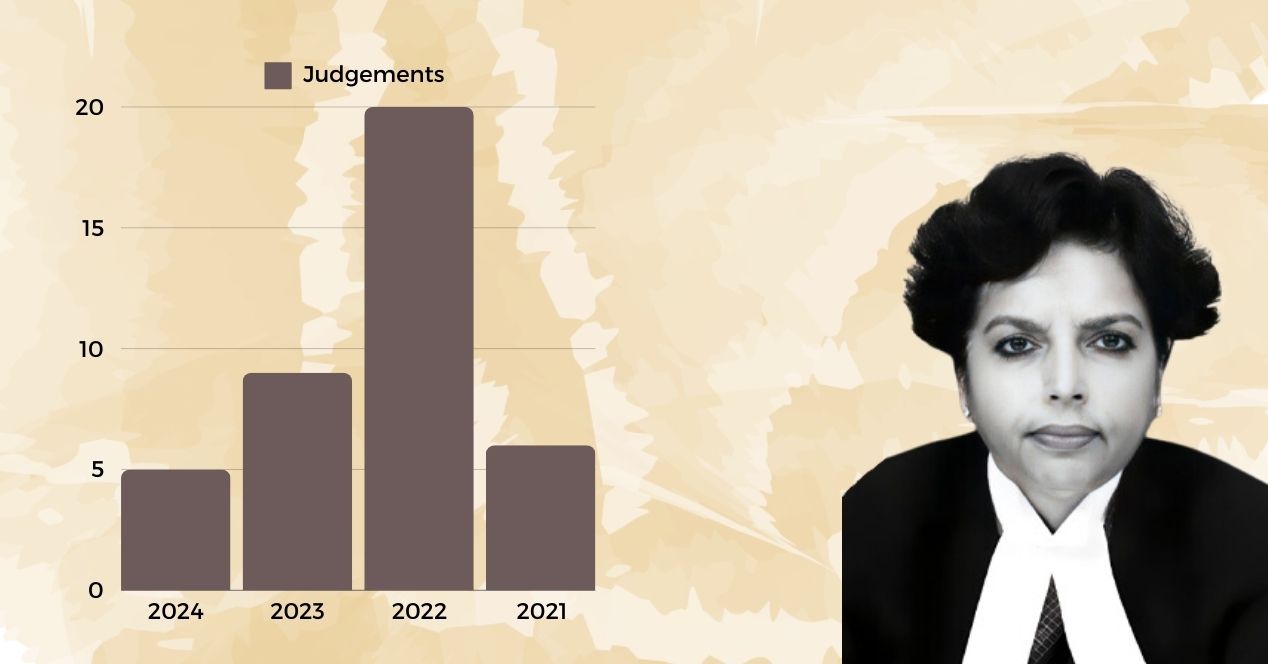Analysis
Justice Hrishikesh Roy: Tenure in numbers
In his tenure over five years, Justice Hrishikesh Roy authored 46 judgements and was a part of 326 benches

Justice Hrishikesh Roy retired today after serving as a judge of the Supreme Court for over five years. During his tenure, he authored 46 judgements and was a part of 326 benches. With his retirement, the sitting strength of the Supreme Court is reduced to 32, leaving two vacancies out of the sanctioned strength of 34.
Justice Roy was elevated to the Supreme Court on 28 August 2019 alongside Justices Krishna Murari, S. Ravindra Bhat, and V. Ramasubramaniam by the Collegium led by CJI Ranjan Gogoi. He is the last to retire in this cohort of judges after Justice Bhat in October 2023.
Justice Roy’s elevation had brought representation from the Gauhati High Court. With his retirement, Justice Ujjal Bhuyan remains the only sitting judge whose parent High Court is Gauhati. In this article, we analyse Justice Roy’s tenure in numbers.
Duration of tenure
Figure 1 plots the expected tenure of all sitting judges of the Supreme Court. The average tenure of the current sitting judges at the Supreme Court is 5.08 years. Justice Roy’s tenure was higher than this average (5.33 years i.e. five years four months).
Justice J. B. Pardiwala will serve the longest tenure of 8.25 years.
Number of judgements authored
Figure 2 highlights the total judgements (blue bar) authored by judges who have served a tenure longer than two years at the Supreme Court. A separate figure (yellow bar) highlights the average judgements authored each year by the sitting judges. Justice Roy authored 46 judgements, averaging 8.63 judgements per year—second lowest after Justice M.M. Sundresh with 8.21 judgements per year.
He has authored more judgements than Justices Sudhanshu Dhulia (45 judgements), Sundresh (28 judgements) and Dipankar Datta (26 judgements).
Within the cohort that was appointed along with Justice Roy, he authored the least number of total judgements and judgements per year. During their tenures, Justices Murari, Bhat and Ramasubramaniam authored 61, 141 and 46 judgements respectively, averaging at 16.2, 34.6 and 12.26 judgements per year respectively.
Year-wise breakdown of authorship
Figure 3 breaks down the number of judgements (left bar) authored by Justice Roy and the number of benches (middle bar) he was a part of. The right bar indicates the rate of authorship (number of benches where he authored the judgement, expressed in percentage terms).
In his first year at the Supreme Court, Justice Roy did not author any judgement, although he was a part of 49 benches. His authorship rate was 0 percent.
In 2020, he authored three judgements while being a part of 40 benches. His authorship rate stood at 7.5 percent.
In 2021, he was part of 93 benches, the highest number of benches he was part of in a given year, but authored only one judgement. His authorship rate dropped to 1.07 percent.
In 2022 also, he authored one judgement and was a part of 72 benches. His authorship rate increased to 1.4 percent.
In 2023, he authored 17 judgements and was a part of 37 benches, increasing his authorship rate to 45.9 percent.
In 2024, he authored 23 judgements, the highest number of judgements he authored in a given year, and was a part of 33 benches, bringing his authorship rate to the highest of 69.7 percent.
In January 2025, his last working month in the top court, he authored one judgement, while being a part of two benches, bringing his authorship rate to 50 percent.
Subject-matter of judgements
The majority of judgements authored by Justice Roy were in criminal matters with 13.
This was followed by service matters (12), property disputes (5), civil (5) and constitutional matters (4). Additionally, Justice Roy authored three judgements in banking, labour and industrial and contract matters and two judgements in consumer and family matters.
Read Justice Roy’s notable judgements here.




